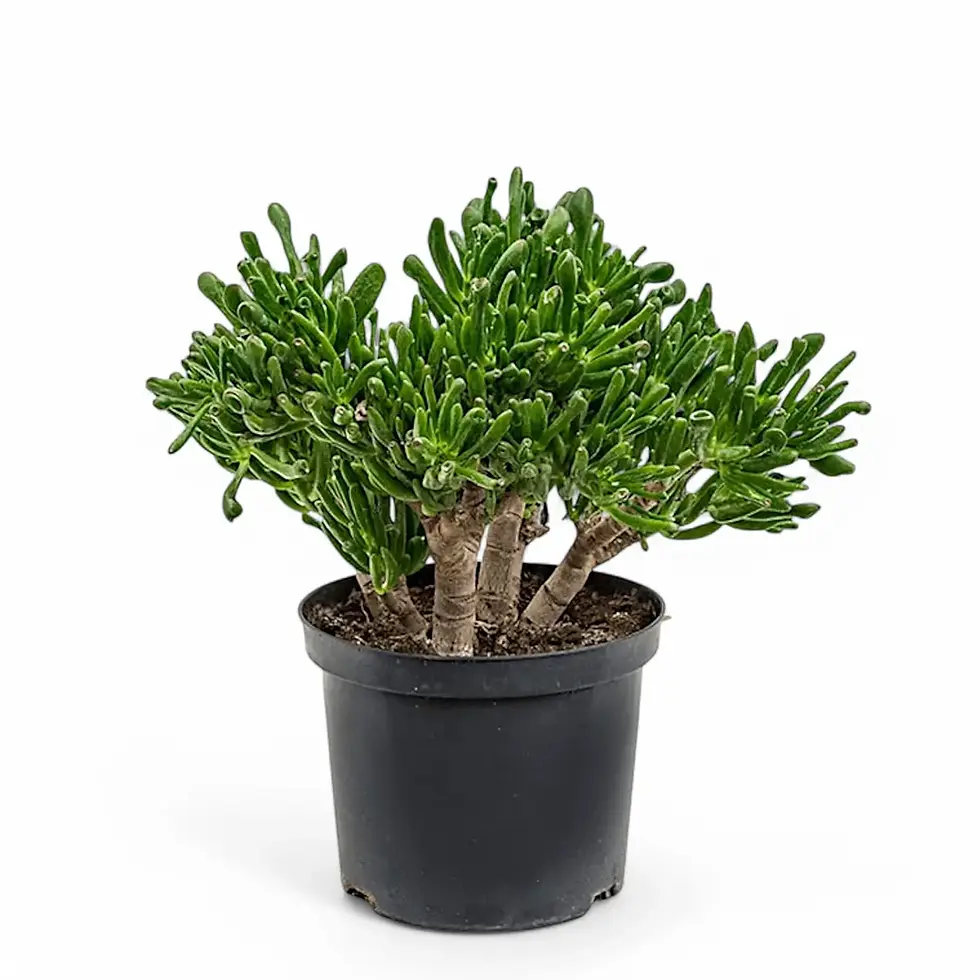Citrus limon x Citrus paradisi 'Lipo' – The Perfect Citrus Hybrid for Your Home
Meet Citrus limon x Citrus paradisi 'Lipo', a stunning hybrid that marries the best of lemons and grapefruits. Its bold, glossy leaves, heavenly scented white flowers, and oversized fruits make it a showstopper in any home or garden. The fruit's flavor? Just right—less sour than a lemon and milder than a grapefruit, offering a delightful balance of sweetness and tang. As the fruits ripen, their skin changes from pale yellow to a vibrant golden hue, making them as visually appealing as they are tasty.
Key Features and Benefits of Citrus limon x Citrus paradisi 'Lipo'
- Lush Leaves: Rich green, lance-shaped, and delightfully glossy.
- Fragrant Flowers: Large, pure white blooms with an intoxicating citrus fragrance.
- Delicious Fruits: Juicy, oval fruits with a mild, refreshing flavor.
- Growth Habit: A strong, upright grower with slightly thorny branches.
- Dual Purpose: Beautiful as an ornamental plant and practical for fresh, homegrown citrus.
- Easy to Care For: Thrives with minimal effort under the right conditions.
What Makes 'Lipo' Special?
- Natural Origins: Thrives in sunny, subtropical climates with temperatures ranging from 18–28°C.
- Growth and Size: Grows up to 2.5–3 meters tall and 2 meters wide, with an annual growth rate of 20–30 cm.
- Safe and Edible: Safe for humans, every part of the plant is edible.
- Longevity: With proper care, it can last for decades, continuing to provide fruit.
- Self-Pollinating: It’s self-pollinating, though hand-pollination can boost yield.
How to Care for Citrus limon x Citrus paradisi 'Lipo'
- Light: Loves full sunlight. Place in a bright spot with 6 hours of sunlight daily.
- Water: Water when the top layer of soil is dry. Ensure proper drainage to prevent root rot.
- Humidity: Adaptable to normal indoor humidity. A humidifier can help in dry conditions.
- Temperature: Prefers 18–24°C. Keep it frost-free during winter (5–12°C).
- Soil: Use well-draining, slightly acidic soil. Add clay pebbles at the bottom for improved drainage.
- Repotting: Repot every 2–3 years into a larger container with drainage holes.
- Fertilizing: Feed with a citrus-specific fertilizer every 2 weeks during the growing season.
- Propagation: Best propagated through cuttings or grafting.
- Hydroponics: Not suitable for hydroponic growth.
- Pruning: Remove dead or long branches to maintain a tidy shape.
- Placement: Ideal for bright indoor spots or outdoor patios during frost-free months.
Citrus limon x Citrus paradisi 'Lipo' - Common Problems and Solutions
- Pests: Spider mites, mealybugs, aphids—treat with neem oil or insecticidal soap.
- Root Rot: Prevent by ensuring proper drainage and avoiding overwatering.
- Leaf Issues: Yellow leaves indicate nutrient deficiencies. Browning tips can be due to underwatering or low humidity. Drooping leaves may result from temperature fluctuations.
- Fungal Problems: Avoid wetting leaves and ensure good air circulation.
- Slow Growth: Check soil pH (ideal: 6.0–6.5) and adjust fertilizer accordingly.
- Poor Fruit Production: Ensure adequate light and consider hand-pollinating flowers.
Extra Tips for Success
- Add mulch in summer to retain moisture.
- Mimic sunny, well-drained conditions for optimal health.
The Name Behind 'Lipo'
The name 'Lipo' is derived from 'Li' (Citrus limon) and 'Po' (Citrus paradisi). This hybrid was first cultivated by Italian breeders, though its exact origins remain a mystery.
FAQs About Citrus limon x Citrus paradisi 'Lipo'
- When is the best time to repot? Spring is ideal as the plant begins its active growth phase.
- Are the fruits edible? Yes, they are refreshing and perfect for a balance of sweetness and tang.
- Can I keep Citrus limon x Citrus paradisi 'Lipo' indoors during winter? Yes, with cool, bright conditions (5–12°C).
Ready to enjoy the beauty and taste of Citrus limon x Citrus paradisi 'Lipo'?
Order yours today and bring the sun-soaked charm of citrus into your home!
Citrus limon x Citrus paradisi 'Lipo'
Citrus limon x Citrus paradisi 'Lipo' is ca. 85 cm tall and comes in a 22 cm pot.































